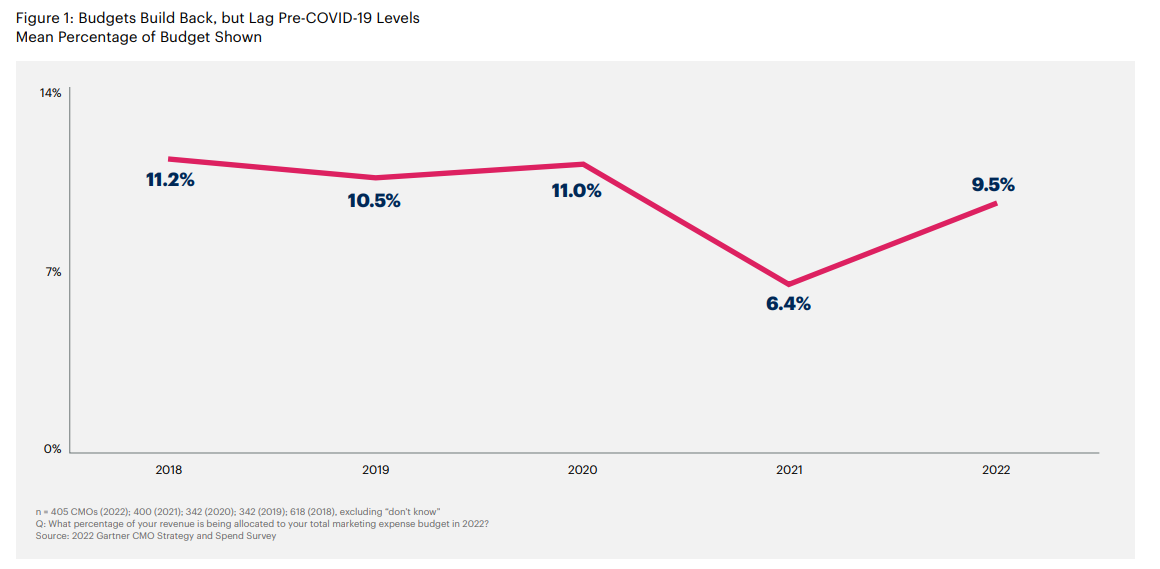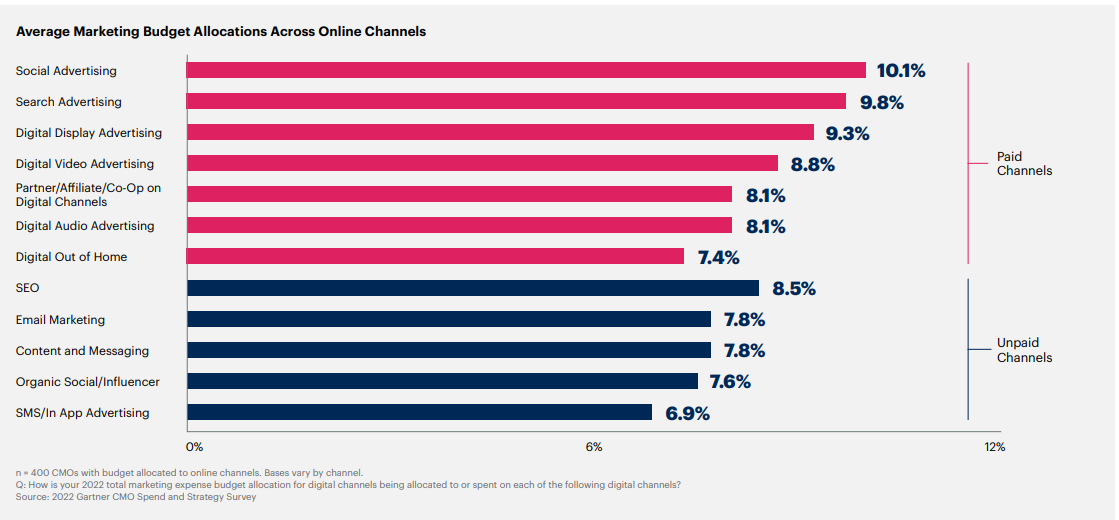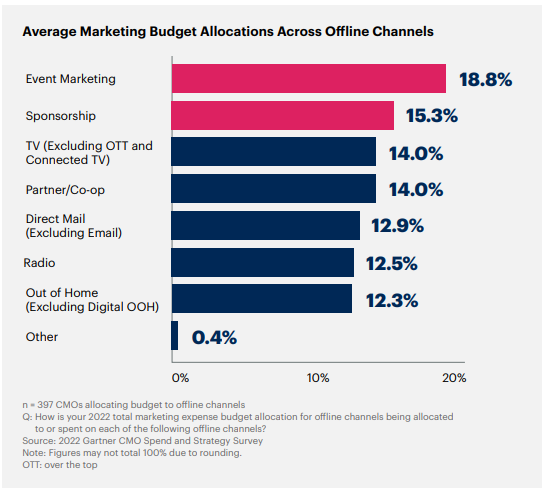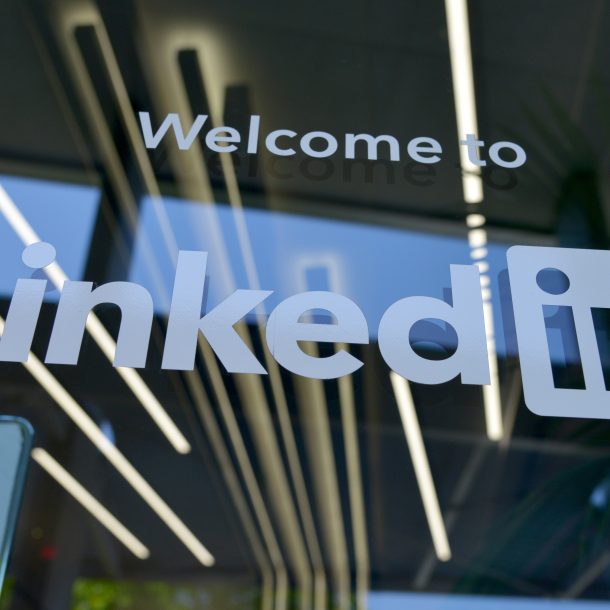CMOs’ budget allocations for 2022 show a big return to offline channels.
Even though marketing budgets grew from 6.4% of company revenue in 2021 to 9.5% in 2022, they still haven’t gone back up to pre-pandemic levels (around 11%).
CMOs estimate that in 2022 their budgets will allocate 56% to online channels and 44% to offline channels. This constitutes a major change compared to last year when 72% of budgets went to online channels. As pandemic protocols have been relaxed, there has been a recalibration of customer journeys. Spending flowed back to offline channels and CMOs switched from digital-first to hybrid, multichannel strategies.
Investment in social advertising doesn’t come as a surprise. Relative newcomers such as TikTok continue to garner a lot of user engagement and even established ones like Facebook haven’t diverted from their growth path. Social media keeps offering highly targeted advertising at scale.

However, channel allocation varies among industries. CPG brands and retailers are the biggest spenders when it comes to social advertising. Financial services providers prefer email marketing. And healthcare companies’ biggest share of their digital budget is spent on search advertising.
Within offline channels, events and sponsorships have strongly rebounded from pandemic-induced budget cuts. They became the top choices in 2022, jointly amassing a third of offline spending.
As we return to more normal operations, it is clear that offline channels are once again becoming a vital part of the marketing mix. CMOs are allocating a significant portion of their budgets to these channels in order to reach their customers where they are. This shift back to offline channels is sure to have a significant impact on the marketing landscape in the coming year.













